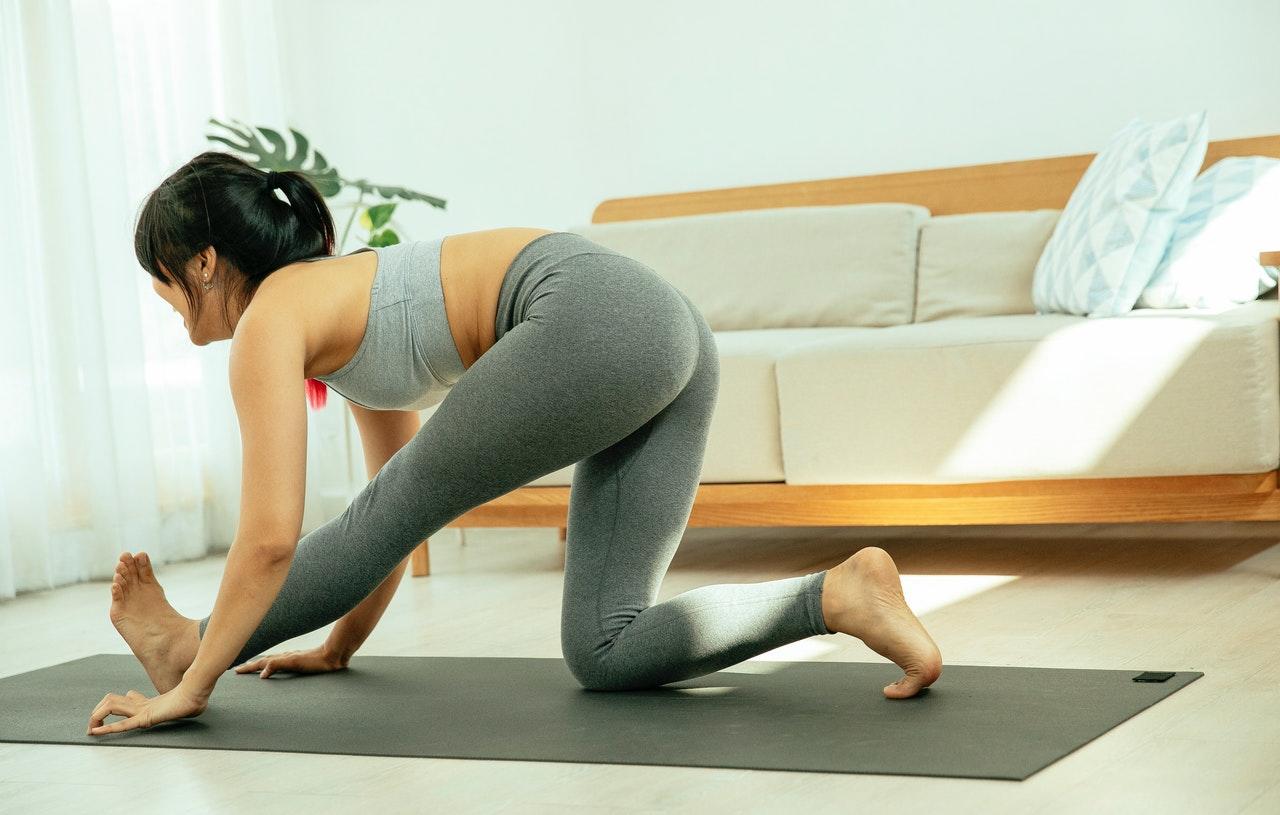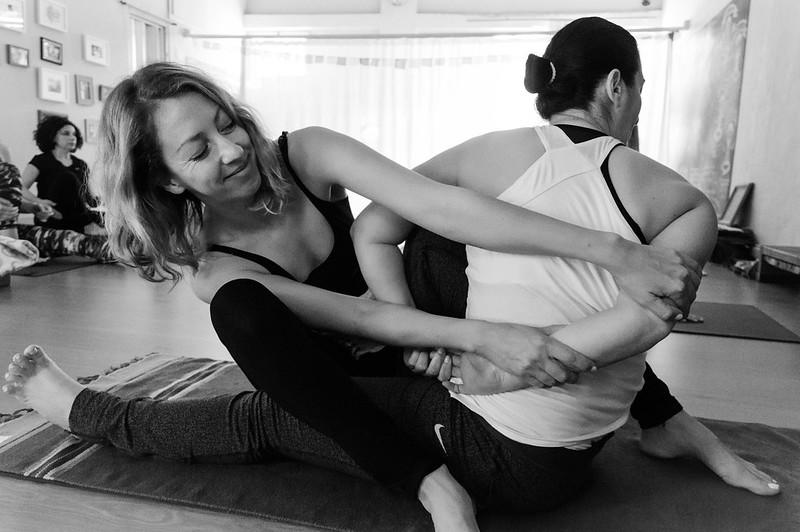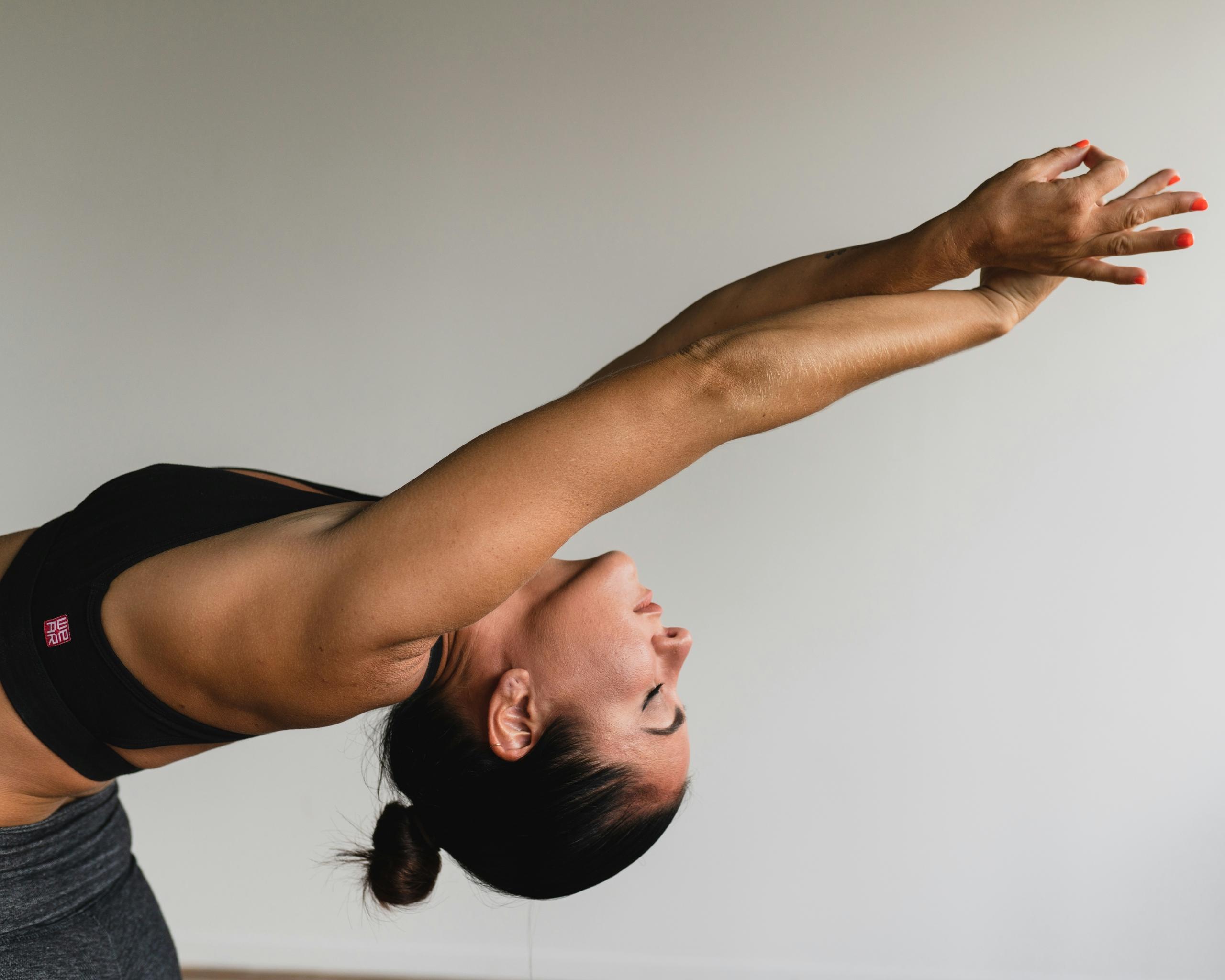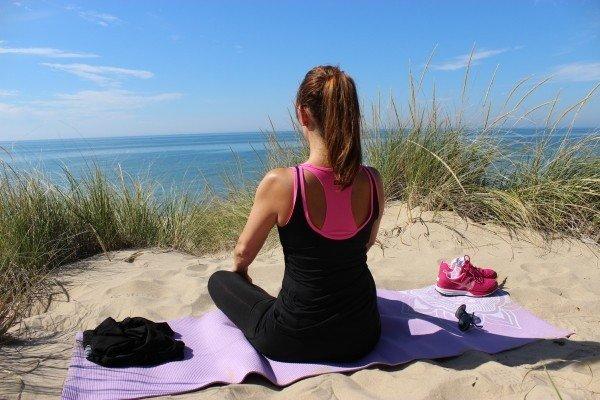People are discovering and unlocking new benefits related to regular yoga practice daily, and why should you be left behind?
Many yogis gain from the positive and mental uplifting effect yoga practice and meditation have on their lives, but while it has been proven to reduces stress one cannot deny that it is highly beneficial to your body and could be considered as a sport.
Yoga can be fitness and body orientated, mind orientated, or both.
Yoga will develop into the practice you need most, and you can decide if you want to take a more philosophical approach, or physiological approach to get the cardiovascular and physical benefits of exercise. This article is going to focus more on the physical aspects of regular yoga practice, and more specifically how it can improve your flexibility, mobility and muscular elasticity.
We’ll help you understand how yoga and flexibility go hand-in-hand, give you some examples of yoga poses for flexibility, explore tips and warnings related to yoga for flexibility and lastly look at how you can enhance your flexibility through the power of frequent practice.

Yoga and Flexibility
Most people immediately associate yoga with flexibility; people who bend themselves like contortionists. You might think that you have to be that too, or be flexible to be good at yoga. Even though we can practise yoga like a sport, this could not be further from the truth.
Yoga is for everyone, regardless of your state of fitness, level of flexibility or body shape.
It is used for older people, children, sick people and those trying to rehabilitate injuries. Becoming flexible is luckily an intrinsic part of the yoga practice itself. It is not the core focus, but like any other sport you will improve in your flexibility if you practice yoga frequently. Improved flexibility and mobility will thus enhance your yoga practice, but the reason why we all do it is to improve ourselves and therefore you should not be concerned about being flexible when starting out.
Most yoga poses also have easier variations (regressions) to help beginners or people with injuries so they are able to gradually build and enhance their elasticity.
So what is yoga then if it’s not just stretches?
Yoga is a set of physical poses (asanas), breathing exercises and meditation practices to unify the mind, body and spirit. It is such a wide discipline that people do it for different reasons and they all benefit from it in the way they want to.
But what if you only want to get flexible and toned and don’t want to do meditation?
The good news is, the more you make yoga your own, the more benefit and enjoyment you’ll get from it. If you have a stressed life and need to calm your mind, you can add meditation practices and breathing techniques to your asana sequence. If you just want to stretch and tone your body, your intention and aim is differently set to focus purely on the poses.
To create the practice you love is now up to you and you do this by finding good teachers, going to classes, finding a private tutor or watching videos by experienced yogis. There is also different types of yoga with different intensity levels and objectives.
Vinyasa and Power Yoga is for strength, cardiovascular health and toning, Ashtanga is incredible challenging and Kundalini yoga has a more eastern spiritual and philosophy focus. For flexibility we recommend Hatha yoga, Vinyasa Yoga or hot yoga. If you’d like a more relaxed yoga you can do restorative yoga which will also work on flexibility with a lot more ease.
Breathwork (Pranayama) is an integral and fundamental part of yoga. Just the ability to breathe correctly through your nose, especially in difficult poses or upside down positions, is a skill in itself. Above and beyond calming the nervous system and oxygenating your body, it has a deeper function to teach us how to breathe through difficulty in life.
Breathing also allows us to go deeper into poses, so you’ll be able to improve your flexibility if you breathe correctly during stretches. To learn more about using your breath and listening to your body, you can read this article on flexibility in yoga.

Some Yoga Poses for Flexibility
Yoga has the magical ability to strengthen, tone and stretch muscles at the same time. Very few poses will thus not have a positive impact on your flexibility. You’ll gain the maximum benefit by doing a combination of stretches that works on the same muscles or areas, in different ways. Yoga sequencing is done in such a way that yoga teachers get you to focus on specific areas and work into the deep tissues and nerves.
Thus to get the most out of your practice it would be good to attend a class or get an experienced teacher to give you a sequenced class that is specifically targeted around flexibility. You can also look on YouTube for some example beginner sequences.
You can also try some of these poses or add them to a beginner sequence if they aren’t included already:
- Cobra Pose – Lie flat on your stomach on the ground and place your hands under your shoulders. Using the back muscles you are going to try and lift your shoulders and upper body from the floor like a cobra, hold the hands on the mat for support.
- Seated Forward Fold – Seated with legs outstretched, try and sit upright and fold forward by hinging at the hips. You’ll feel a stretch in your back and the back of the legs. Grab your big toes and get your chest closer to your legs as you fold forward and stretch deeper into the hamstrings.
- Butterfly Pose – This is a great hip opener and can be done almost anywhere. Sit on the floor and get the bottoms of your feet to touch, allowing the knees to bend and drop on either side. Allow the hips to relax as the knees move closer to the floor. You can also stretch into your back if you lean forward, grab your toes with your hands and lower your head closer to your feet or chest closer to the floor.
- Cat and Cow Pose - These two poses that are usually used together and are excellent for spine flexibility. Standing on all fours, hands under the shoulders and knees under your hips on the floor. To go into cow you are going to gently lower the belly to the floor and lift your chin and chest to look to the front. For Cat pose you are going to tuck your chin to your chest and pull in the belly button as you dome your back towards the ceiling.
- Downward-Facing Dog – Start in a plank position and lift your hips to the sky, creating a pyramid shape between the floor and your body. Your back should be straight as your hands push into the floor and with more experience you’ll be able to straighten your legs.
- Supine Twist - A great stretch that works into the hip and spine. Start with your back on the ground and legs outstretched. Grab your right knee, hug it into your chest and release the right hand, extending it to the right onto the floor to ground the right shoulder. Place your left hand just above your right knee and gently draw the knee over your body to twist the spine to the left, also feeling an opening in the right hip. You can also stretch into the neck if you look to the right hand. Remember to do the left side as well where the left arm is grounded, and knee goes over your body to the right.
Read this article for the best poses to add to your yoga flexibility workout. We’ve included pictures and more specific instructions, plus you can use the 11 poses to create your own sequence. It is also important to ensure you set-up poses by positioning every hand, foot, knee or shoulder correctly to protect your body and do yoga safely, so be sure you always consider your safety first and take advice from experienced yoga teachers.

Risks and What to Avoid When Building Flexibility
Every sport has its risks, but luckily the focus of yoga is first your own body and then the shape and form.
Every posture, and every move should be mindful and suited to your own body. Always remember that the benefit and sensations you create in your body are the first priority, then shape and form.
Here are a couple of other important tips for beginners:
- Take off the pressure to be perfect, yoga is about the actual experience of discovering your body and learning.
- Don’t’ force it. Any quick movements can injure you, so rather move slowly and if you feel sharp pains immediately back out of the pose.
- Be patient. Building flexibility comes over time and a lot of times you’ll go faster if you move slower.
- Learn to relax into stretches. We tend to muscle things in life, if you do passive stretches you need to learn to relax or melt into the pose.
- Don’t forget to breathe. You can also image you are breathing into the area that’s being stretched, letting go and surrendering a bit more with each exhale.
- Don’t compare yourself to others, your body is different and you are getting all the benefit of your practice if you move and breathe the way that’s suited to your body.
You can also read more about how to avoid mistakes if you plan to do yoga flexibility poses on your own.

The Power of Practice and Tips for Your Routine
Building flexibility, or becoming good at anything, takes a calm persistence. Those tiny, daily improvements you make will add up to have you look back next year in amazement at the new, healthier and happier you.
Here are a few additional tips to ensure you get the maximum benefit from your yoga practice:
- The in-between spaces between poses are just as important. Try and transition smoothly and with mindfulness between poses.
- Frequent practice is more beneficial than killing it one day and doing nothing the next. Dedicate about 20 minutes a day to get started and rather focus on getting onto your mat while gradually building a habit and affinity for yoga.
- You can set a new intention for each practice, so maybe today you focus on just breathing correctly, tomorrow you focus around feeling into each muscle-fibre and on another day you focus on just being on your mat.
- Use music and a quiet environment to make your practice enjoyable and without interruptions. Allow yourself the time to escape and connect with yourself.
- Add meditation and mindfulness practices to reduce daily stress.
- Mornings are great for setting your day up while evenings are good for closing off your day, so try both and see what works best for you.
- Diversify your practice and try different sequences. This will keep your mind engaged and you will always learn about yourself and your body.
Getting more flexible will make movement and ordinary daily tasks easier. If you choose to do it through yoga you might also benefit by releasing stress, challenging yourself, building and toning muscles and balancing your hormones.
Don’t feel like figuring things out? We have experienced yoga teachers and tutors right here on Superprof to make your practice a safer one that’s built around your needs.
Choose yoga for your new path to flexibility; a path to calm your mind, strengthen your body and light up your life with joy.
























